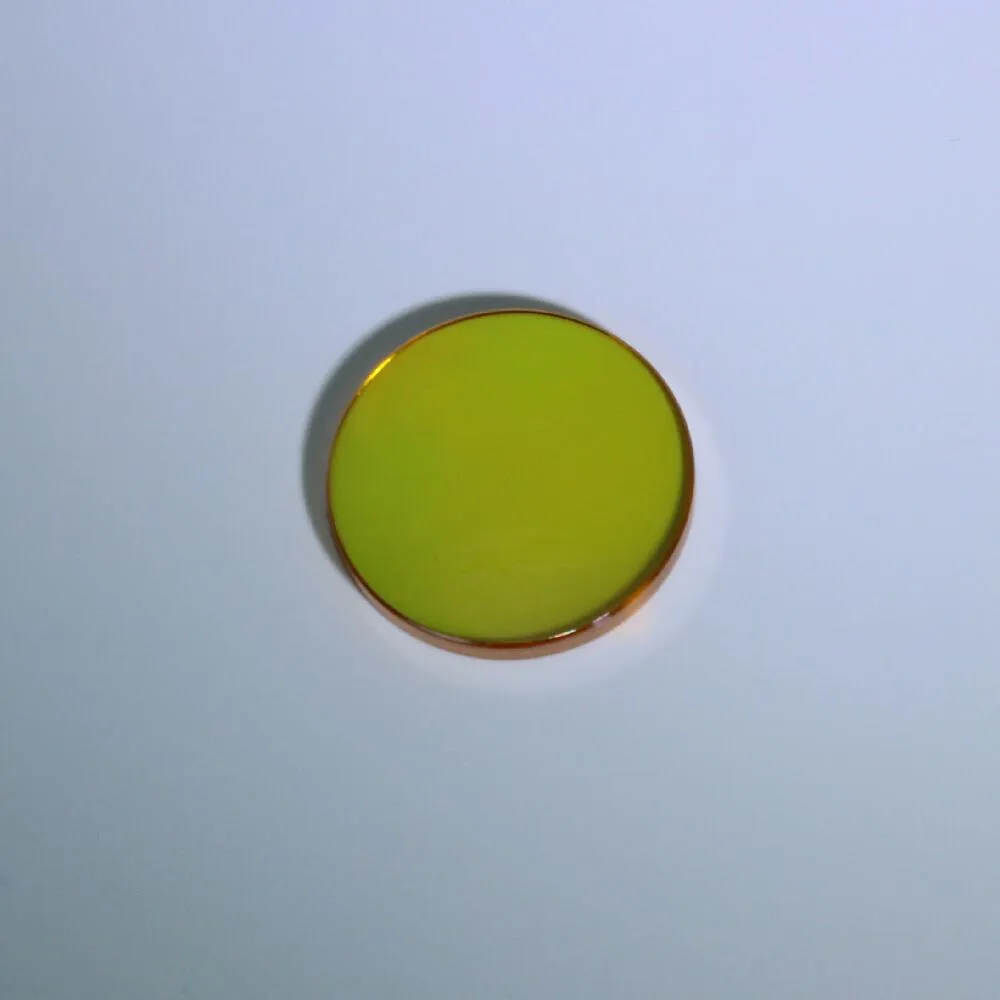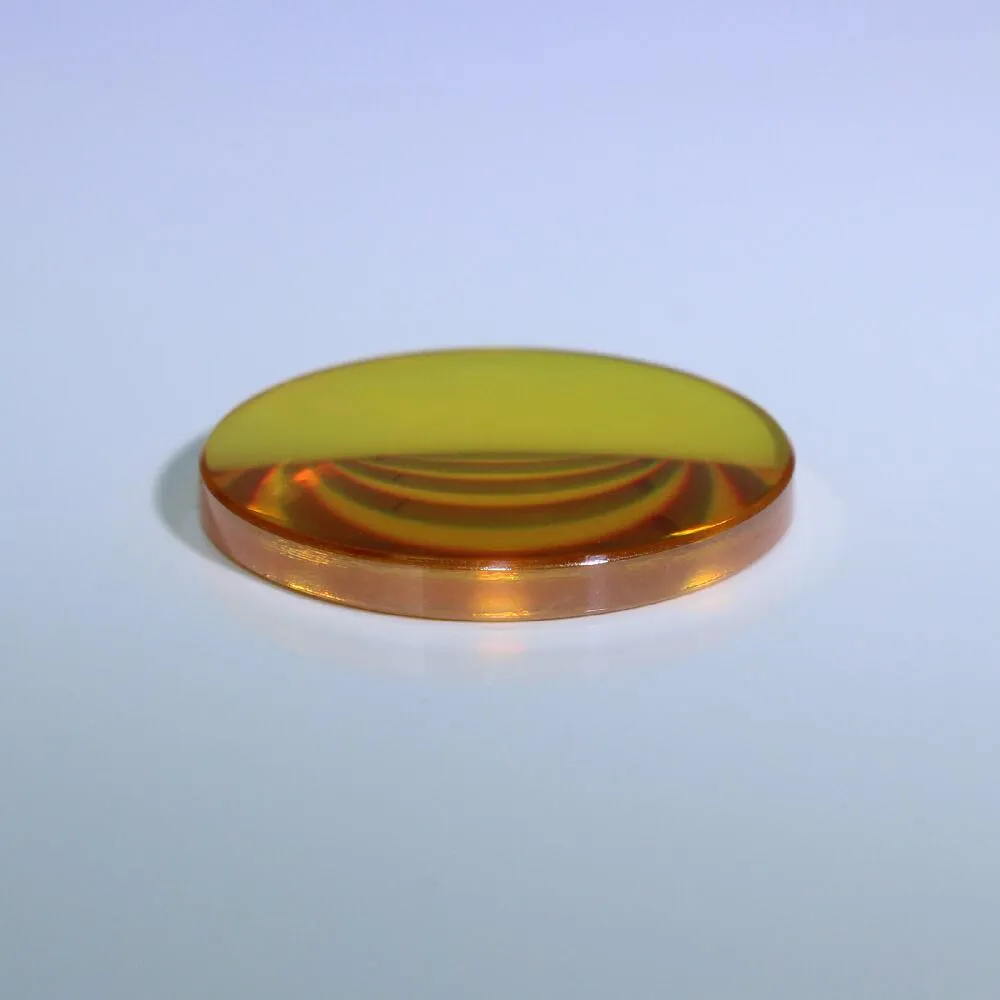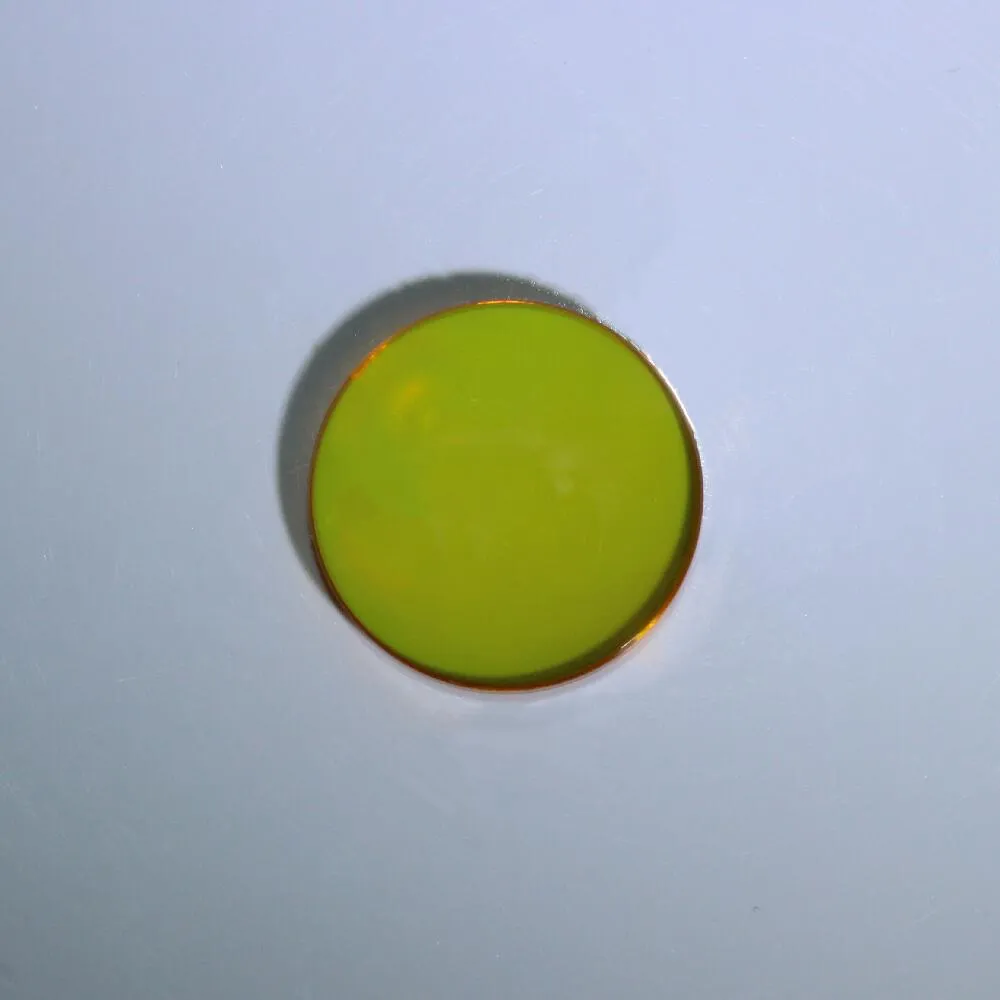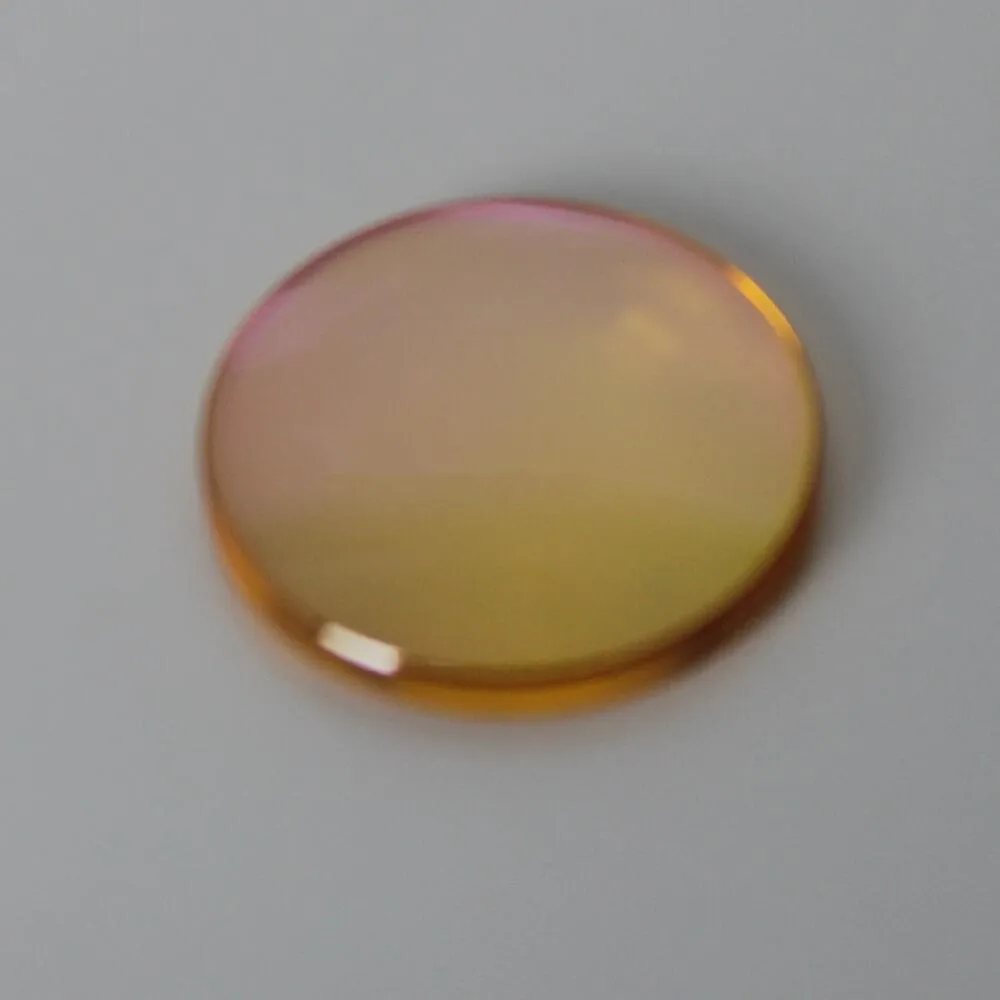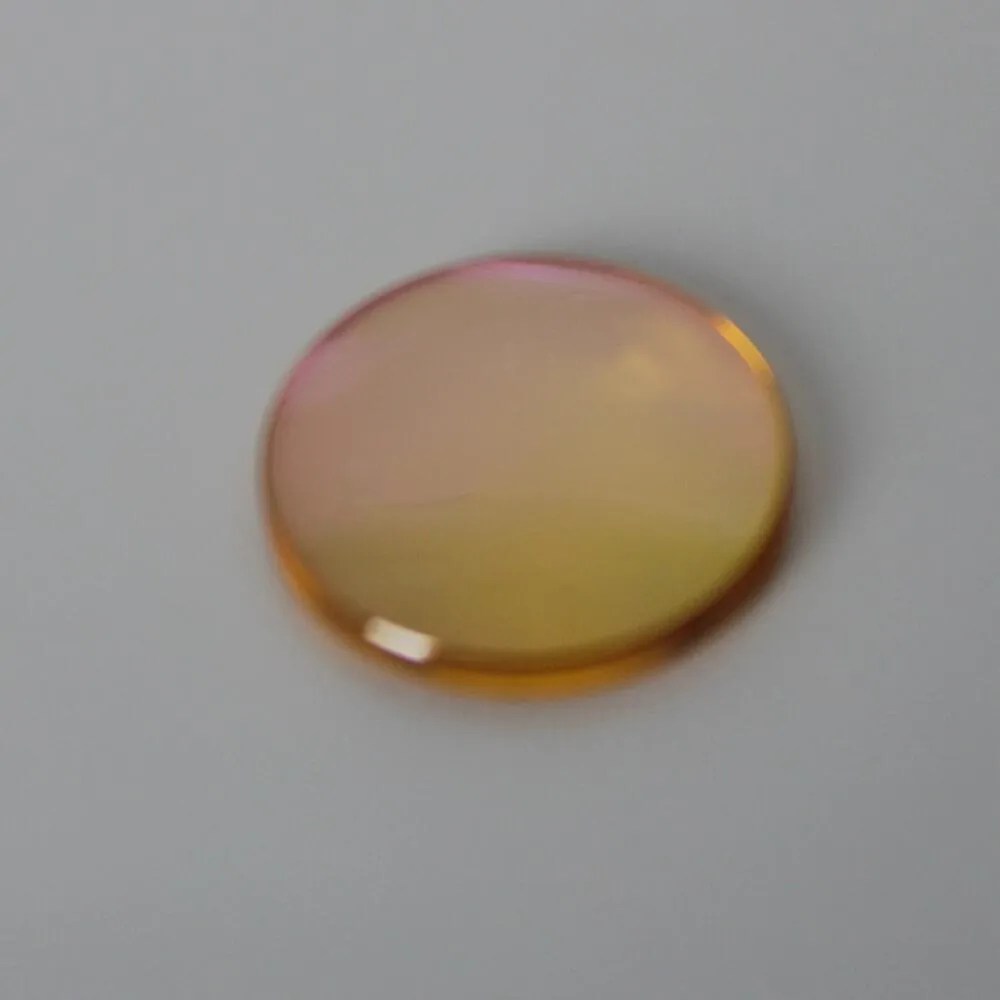Focusing Lens D30 D40 D50 ZnSe for CO2 Laser Machine
Dimension: Dia. 25.00mm
Thickness: 2.00mm
Tolerance : +/-0.10mm
Zinc Selenide is a transparent yellow polycrystalline substance with a transmission range of 0.5-21µm.ZnSe lenses are usually used in collimators. Also ideal for use with high power CO2 lasers.It provides sufficient transmission in the visible region to allow the use of red collimating beams.
A ZnSe lens is a precision optic commonly used in thermal imaging, high power CO2 laser systems and in the life sciences.
- Key Properties of ZnSe Lenses
1) Zinc Selenide ZnSe is a transparent, yellowish polycrystalline substance which transmits in the range range 0.5-21µm. It is ideal for mid-infrared applications, but can also transmit some visible light. This means optics incorporating ZnSe lenses lend themselves to visual inspection when IR light is turned off.
2) Absorption coefficient of Zinc Selenide is 0.0005 cm-1 at 10.6 μm. This ultra-low absorption means ZnSe lenses can reduce energy loss and increase accuracy in sensitive instrumentation: a crucial advantage for applications in laser optics where energy is focused on a very small point.
3) Zinc Selenide has a melting point of 1525°C and a thermal conductivity is 18 W m-1 K-1 at 298K. The thermal expansion coefficient is 7.1 x 10-6 /°C at 273K. Zinc Selenide lenses exhibit a high resistance to thermal shock and can be used in thermally demanding applications.
4) The reflectivity of Zinc Selenide is typically 29.1% at 10.6 μm (2 surfaces), and our ZnSe lenses can be AR coated for minimal energy loss. Since this is a soft material and can be easily scratched, we suggest kindly using especial care when handling your ZnSe lenses.
- Production of a ZnSe Lens
1) The highest quality ZnSe blanks are those which have been chemically vapor deposited in production, and these are the blanks we use at VY Optoelectronics Co., Ltd. to craft our precision lenses.
2) After a blank has been roughly cut to the desired size and shape, diamond turning is used to match the exact curve, roughness, and dimension specified in the design.
3) The surface of the lens is polished to high standards.
4) For high performance in CO2 laser focusing applications, the lenses are supplied with no coating. However, anti-reflection or other optical coatings can be applied as desired.
5) Lenses produced at VY Optics factory are rigorously tested to ensure it fully meets your specifications as well as all applicable standards. State of the art metrology equipment is used to test for accuracy and performance.
- Factory Standard
Lenses are carefully tested before leaving our factory to ensure it meets all specifications. Please do not hesitate to contact us to discuss a custom order, to inquire about our manufacturing limit or custom specifications.
1) Substrate Material: ZnSe
2) Shape: Spherical Plano-Concave, P-Convex, Concave-Convex or Aspheric
3) Surface Figure: λ/10 or better before coating at 10.6μm
4) Surface Quality: 40-20 or better per MIL-PRF-13830B
5) Dimensional Tolerance: + 0.00mm, – 0.25mm
6) hickness Tolerance: +/- 0.25mm
7) Chamfer: 0.35mm at 45° (typical)
8) Concentricity: < 0.05mm
9) Focal Length Tolerance: +/- 2%
10) Antireflection Coating: Ravg < 0.6% per surface at 3-5μm
Ravg < 0.75% per surface at 8-12μm
Ravg < 0.5% per surface at 10.6μm
11) Clear Aperture: Exceeds central 85% of dimension
12) Absorption: <0.3% total absorption as measured by CO2 laser calorimetry
13) Design Wavelength: 10.6μm
- Applications
1) ZnSe is used to form II-VI light-emitting diodes and diode lasers, which emits blue light.
2) ZnSe doped with chromium (ZnSe:Cr) has been used as an infrared laser gain medium emitting at about 2.4 μm.
3) It is used as an infrared optical material with a remarkably wide transmission wavelength range (0.45 μm to 21.5 μm). The refractive index is about 2.67 at 550 nm (green), and about 2.40 at 10.6 μm (LWIR). Similar to zinc sulfide, ZnSe is produced as microcrystalline sheets by synthesis from hydrogen selenide gas and zinc vapour.
4) ZnSe activated with tellurium (ZnSe(Te)) is a scintillator with emission peak at 640 nm, suitable for matching with photodiodes. It is used in x-ray and gamma ray detectors. ZnSe scintillators are significantly different from the ZnS ones.
- People also ask
1) What is ZnSe used for?
A ZnSe lens is a precision optic commonly used in thermal imaging, high power CO2 laser systems and in the life sciences.
2) What is the name of ZnSe?
Zinc Selenide (ZnSe)
3) What is ZnSe lens?
A ZnSe lens is a precision optic commonly used in thermal imaging, high power CO2 laser systems and in the life sciences.
4) How do you make ZnSe?
The ZnSe product was prepared by first dissolving 2 g of PVP in 70 mL of deionized water, followed by vigorous stirring for 2 h at 70 °C. Next, 0.4 mmol of selenium powder was dissolved in 80 mL of ethylenediamine.
Our Ordering Process
Send us your request with detailed specifications
Receive a commercial offer with terms and costs
After your approval, we handle manufacturing, quality control, and shipping
📦 Shipping
3-5 days in EU, from 10 days to USA
💳 Payment methods
Cash, Bank Transfer, Cards (Visa, Mastercard, Amex, Discover) and PayPal
💬 Questions?
Contact us via WhatsApp, phone, live chat or email
